Hello Hivers.
☺☺☺
I am amazed at how many things happen around us and we do not notice; at least I had never thought about how dragonflies feed despite seeing them daily in my backyard and in several places where I pass by every day; in fact I have published several times photographs that I have managed to capture but I did not know that they were fierce hunters and that they existed since ancient times.
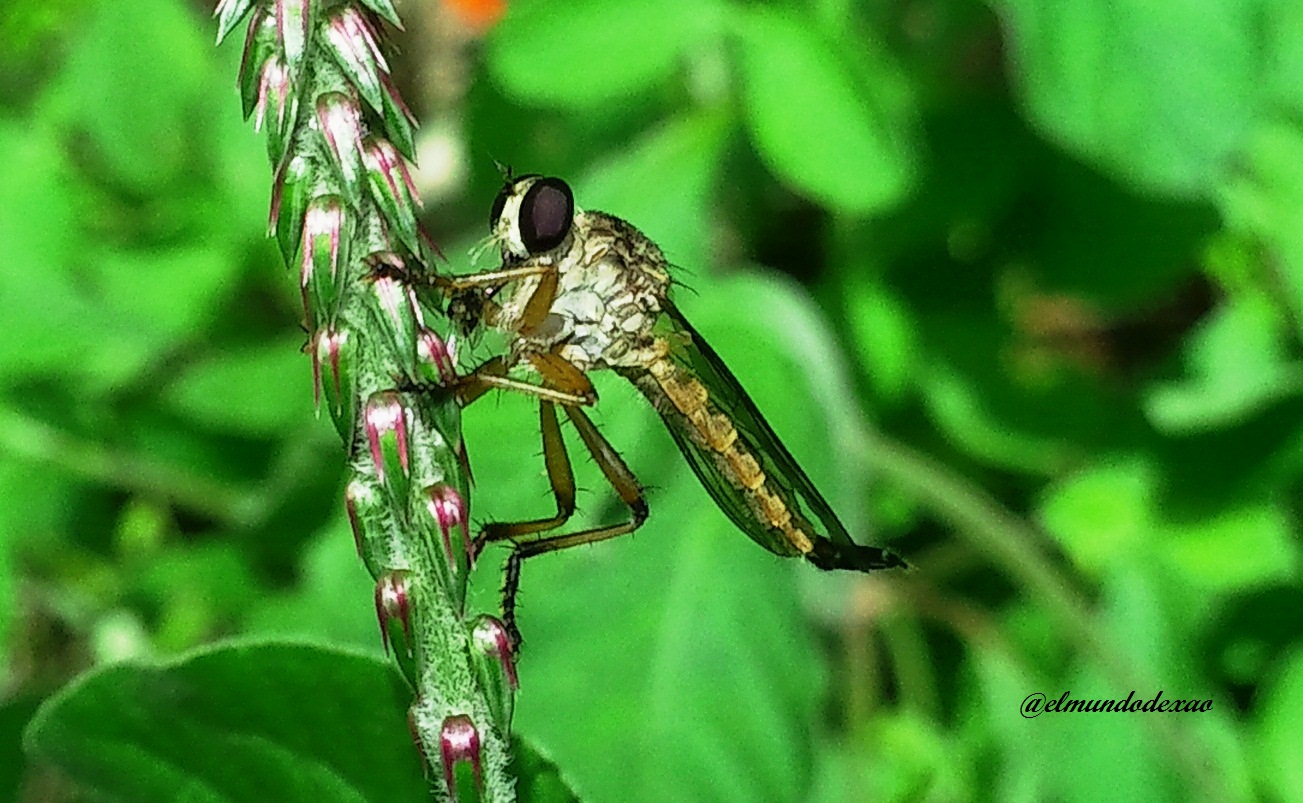
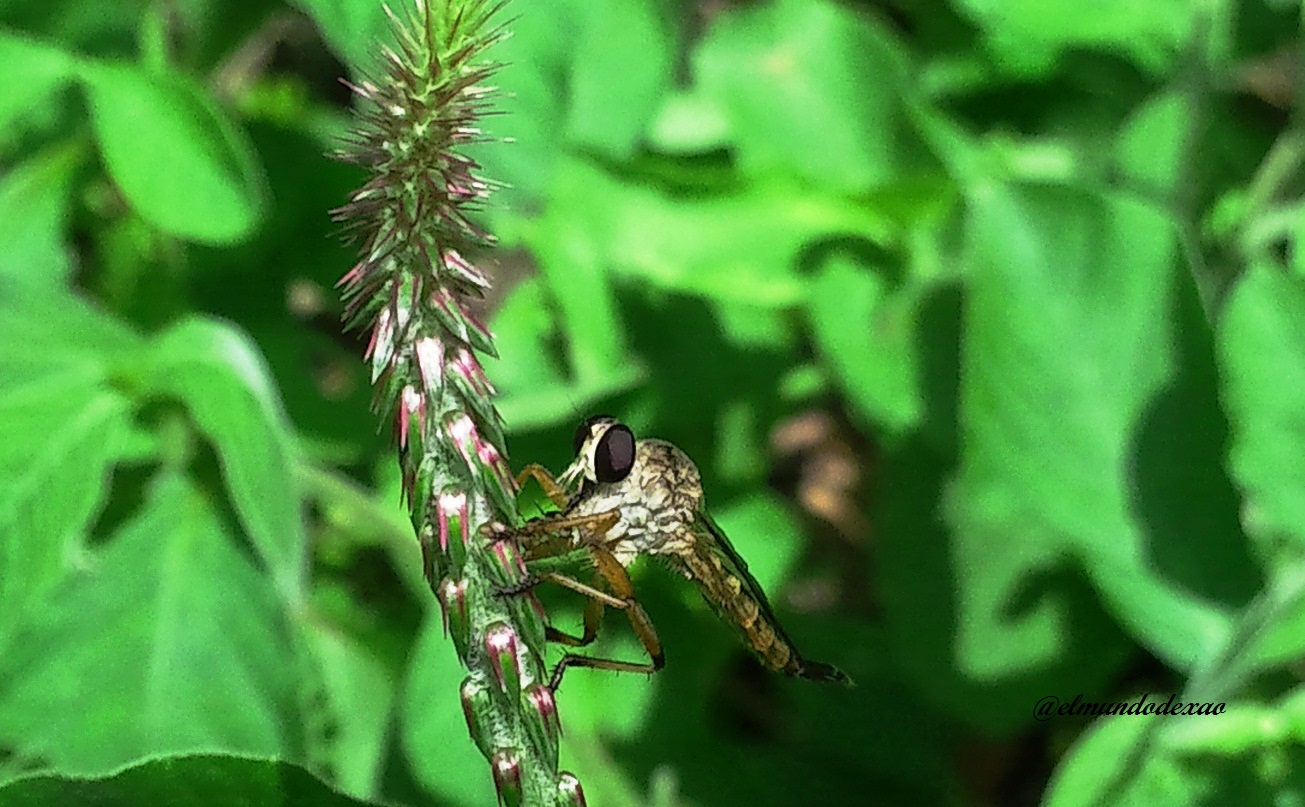 These photographs that I share with you today were taken in my backyard when I noticed a strange insect fluttering around in an unusual way; the first thing that came to my mind was that it was some kind of fly since I have seen some really unusual ones on several occasions. I was surprised how calm it was; I say this because my camera does not have a good zoom so I have to get close enough for the macro to work well and yet the insect did not show any concern.
These photographs that I share with you today were taken in my backyard when I noticed a strange insect fluttering around in an unusual way; the first thing that came to my mind was that it was some kind of fly since I have seen some really unusual ones on several occasions. I was surprised how calm it was; I say this because my camera does not have a good zoom so I have to get close enough for the macro to work well and yet the insect did not show any concern.
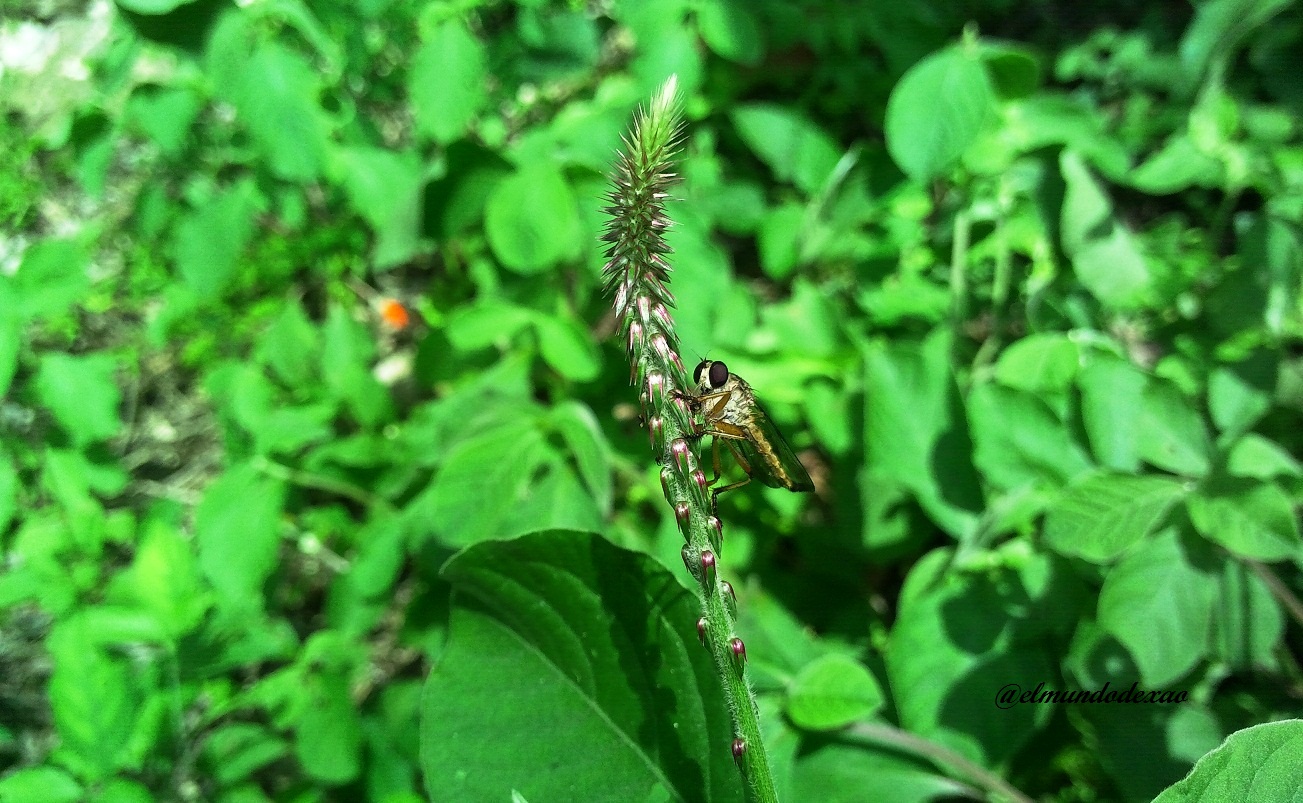
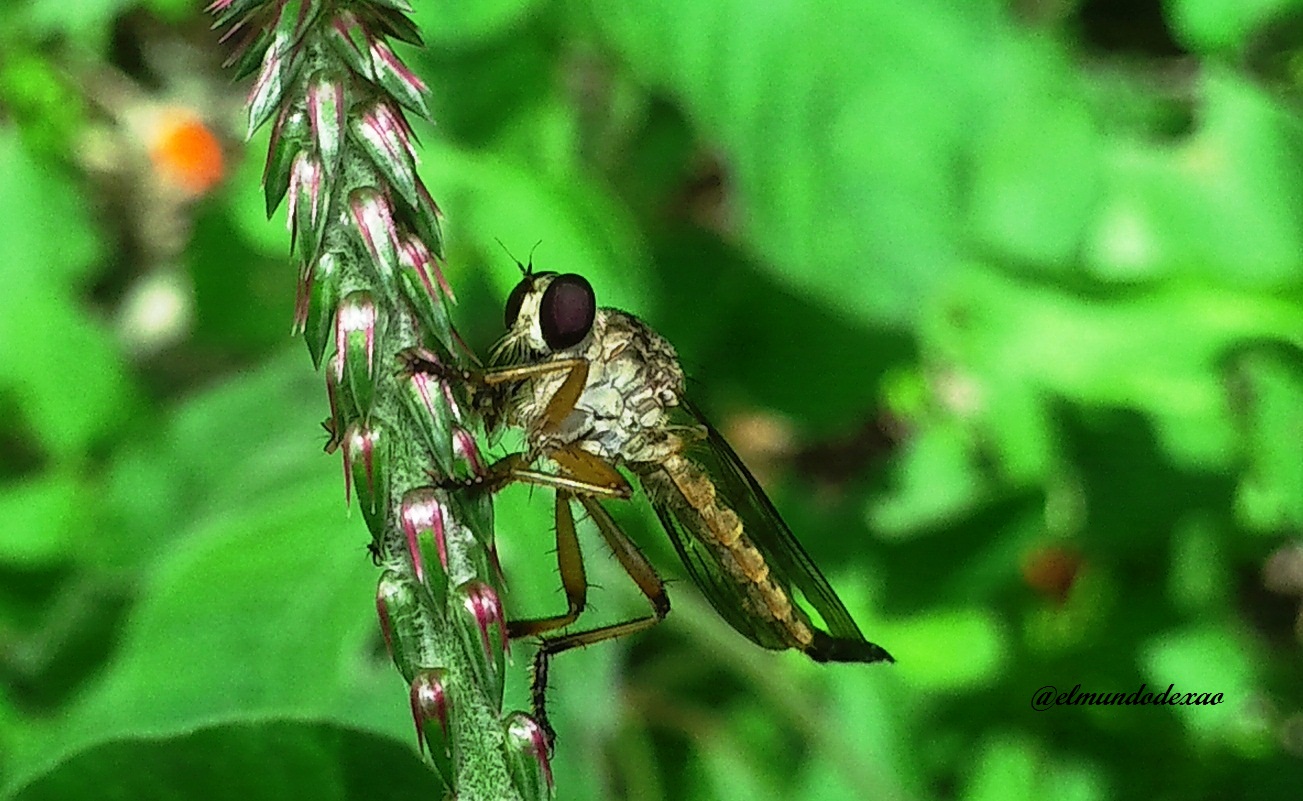 Then I noticed that it was devouring an insect and I also noticed the great resemblance to a dragonfly so I searched among the things I have investigated and indeed it looks like one; but there is a strange detail; its wings are like a dragonfly's but it places them in the position that damselflies do. Note this feature because it is one of the notable differences between damselflies and dragonflies when they are at rest. So this insect looks like some sort of combination of Anisoptera and Zygoptera. While I was watching it, it finished its bite and flew but immediately fell on a leaf and had between its legs a small beetle which was not small enough to devour it so it had to let it go and that led me to find out that dragonflies are called hunters of the air for their ability to catch their prey in flight; among which I can mention flies, wasps, moths and even others of the same species so they can be classified as cannibals. Well friends it has been a pleasure to share these photographs and learning’s with you, I wish you have a nice morning, afternoon or evening depending on your location.
Then I noticed that it was devouring an insect and I also noticed the great resemblance to a dragonfly so I searched among the things I have investigated and indeed it looks like one; but there is a strange detail; its wings are like a dragonfly's but it places them in the position that damselflies do. Note this feature because it is one of the notable differences between damselflies and dragonflies when they are at rest. So this insect looks like some sort of combination of Anisoptera and Zygoptera. While I was watching it, it finished its bite and flew but immediately fell on a leaf and had between its legs a small beetle which was not small enough to devour it so it had to let it go and that led me to find out that dragonflies are called hunters of the air for their ability to catch their prey in flight; among which I can mention flies, wasps, moths and even others of the same species so they can be classified as cannibals. Well friends it has been a pleasure to share these photographs and learning’s with you, I wish you have a nice morning, afternoon or evening depending on your location.
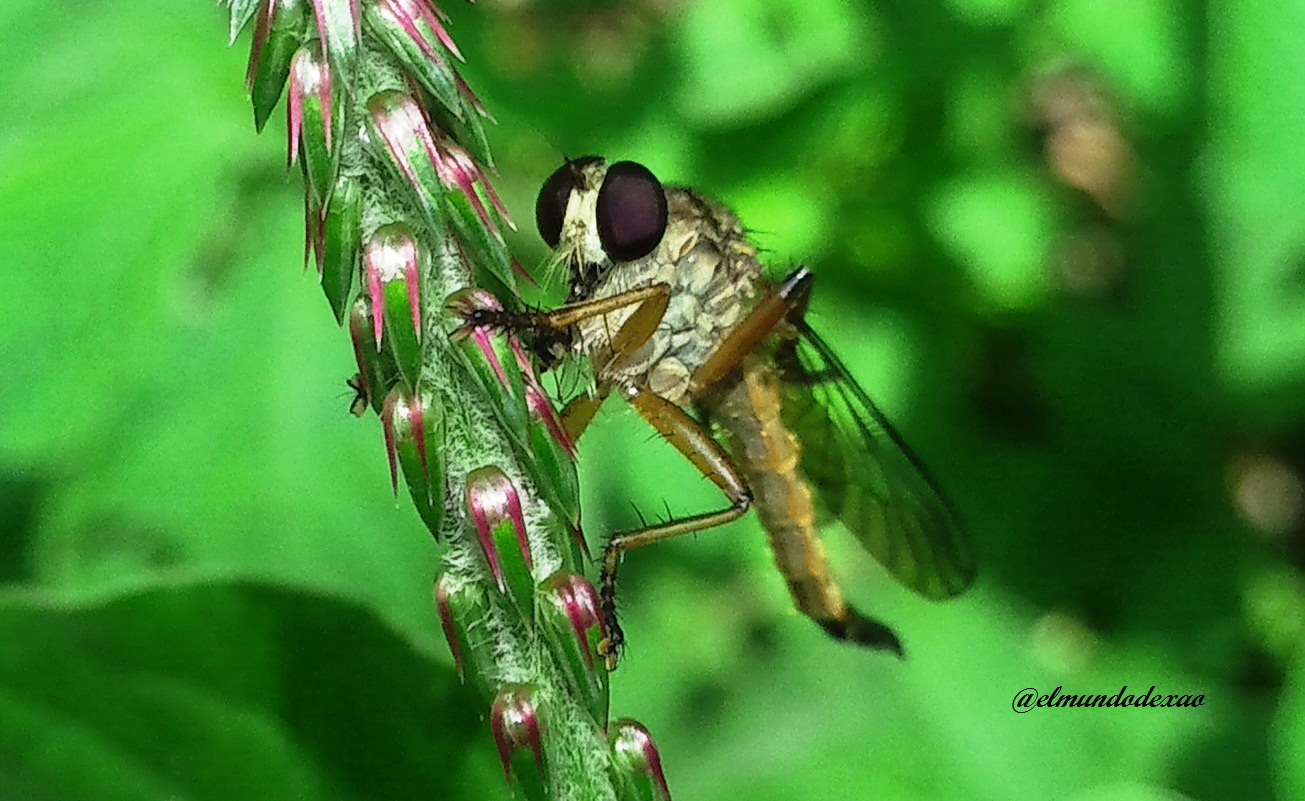
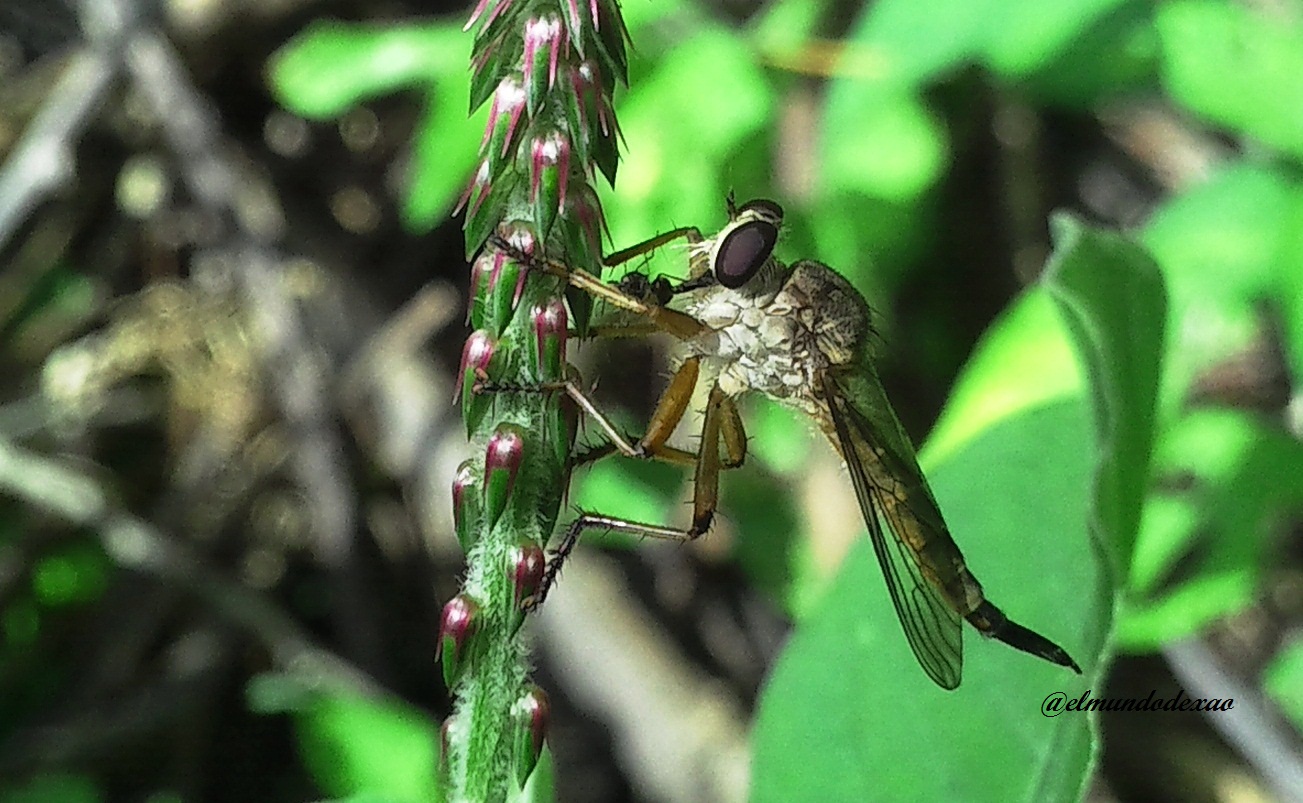
Photo Source: Own photos captured with a Síragon camera.
Modified size: With the Paint Program.
Thanks for visiting my Blog… AH! Don't forget to vote, reblogear, and comment.
Translated with:

www.DeepL.com/Translator (free version)

Macrofotografías “Libélula Cazan en Pleno Vuelo”.
Hola Hivers
☺☺☺
Me sorprendo de cuantas cosas pasan a nuestro alrededor y no lo percibimos; por lo menos yo nunca me había puesto a pensar cómo se alimentaban las libélulas a pesar de verlas a diario tanto en mi patio como en varios sitios por donde tránsito a diario; de hecho he publicado varias veces fotografías que he logrado capturar pero no sabía que eras feroces cazadoras y tampoco que existían desde tiempos antiguos.

 Estas fotografías que comparto hoy con ustedes las capture en mi patio cuando me percate de un insecto extraño que revoloteaba de manera inusual; lo primero que se me vino a la mente fue que era algún tipo de mosca ya que en varias ocasiones he visto algunas realmente fuera de lo cotidiano. Me sorprendió lo tranquila que estaba; lo digo porque mi cámara no tiene un zoon bueno por lo que debo acercarme lo suficiente para que la macro funcione bien y aun así el insecto no mostraba inquietud alguna.
Estas fotografías que comparto hoy con ustedes las capture en mi patio cuando me percate de un insecto extraño que revoloteaba de manera inusual; lo primero que se me vino a la mente fue que era algún tipo de mosca ya que en varias ocasiones he visto algunas realmente fuera de lo cotidiano. Me sorprendió lo tranquila que estaba; lo digo porque mi cámara no tiene un zoon bueno por lo que debo acercarme lo suficiente para que la macro funcione bien y aun así el insecto no mostraba inquietud alguna.

 Luego me percate que estaba devorando un insecto además también note el gran parecido con una libélula por lo que busque entre las cosas que he investigado y efectivamente se parece; pero hay un detalle extraño; sus alas son como de libélula pero las coloca en la posición que lo hacen los caballitos del diablo. Note esta característica debido a que es una de las diferencias notables entre caballos del diablo y libélulas cuando están en reposo. Por lo que este insecto parece una especie de combinación de Anisópteros y Zigópteros. Mientras estuve observándola termino su bocado y voló pero inmediatamente cayó sobre una hoja y tenía entre sus patas un pequeño escarabajo el cual no era tan pequeño como para devorarlo por lo que tuvo que soltarlo y eso me llevo averiguar que a las libélulas les llaman cazadores del aire por sus habilidades para atrapar sus presas en pleno vuelo; entre las cuales puedo mencionarle moscas, avispas, polillas y hasta otras de su misma especie por lo que se les puede clasificar como caníbales. Bueno amigos ha sido un gusto compartir estas fotografías y aprendizajes con ustedes les deseo que tengan una linda mañana, tarde o noche según sea su ubicación.
Luego me percate que estaba devorando un insecto además también note el gran parecido con una libélula por lo que busque entre las cosas que he investigado y efectivamente se parece; pero hay un detalle extraño; sus alas son como de libélula pero las coloca en la posición que lo hacen los caballitos del diablo. Note esta característica debido a que es una de las diferencias notables entre caballos del diablo y libélulas cuando están en reposo. Por lo que este insecto parece una especie de combinación de Anisópteros y Zigópteros. Mientras estuve observándola termino su bocado y voló pero inmediatamente cayó sobre una hoja y tenía entre sus patas un pequeño escarabajo el cual no era tan pequeño como para devorarlo por lo que tuvo que soltarlo y eso me llevo averiguar que a las libélulas les llaman cazadores del aire por sus habilidades para atrapar sus presas en pleno vuelo; entre las cuales puedo mencionarle moscas, avispas, polillas y hasta otras de su misma especie por lo que se les puede clasificar como caníbales. Bueno amigos ha sido un gusto compartir estas fotografías y aprendizajes con ustedes les deseo que tengan una linda mañana, tarde o noche según sea su ubicación.


Fuente de Fotos: Propias capturadas con una cámara Síragon.
Modificado el tamaño: Con el Programa Paint.
Gracias por visitar mi Blog… ¡AH! No se olvide de votar, rebloguear y comentar.













Hola @elmundodexao...
Si es una libélula, pero todavía le falta una muda para su etapa adulta.
☺
Hola @shaotech; ah ok. Gracias por la aclaración es bueno saberlo. Gracias por leerme y comentar.

Dear @elmundodexao,
Your support for the current Hive Authentication Services proposal (#194) is much appreciated but it will expire in a few days!
May I ask you to review and support the new proposal (https://peakd.com/me/proposals/240) so I can continue to improve and maintain this service?
You can support the new proposal (#240) on Peakd, Ecency,
Thank you!
Hello friend @arcange; it is a pleasure to support you.

